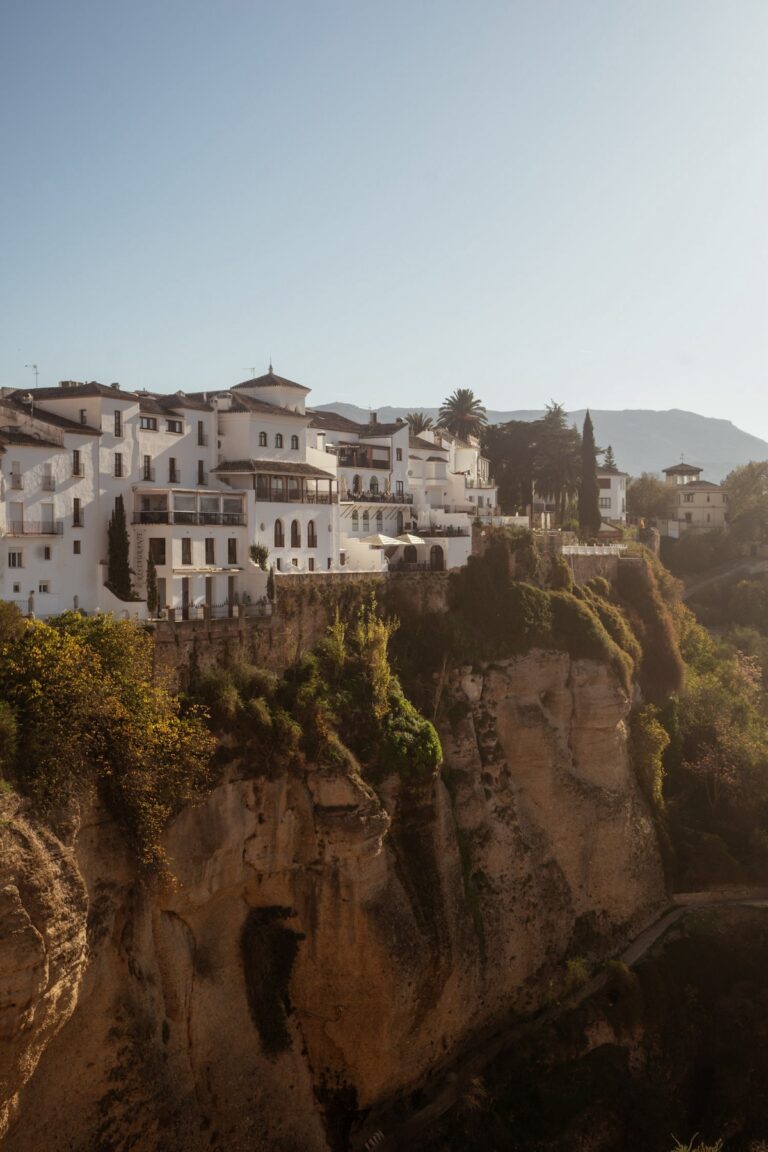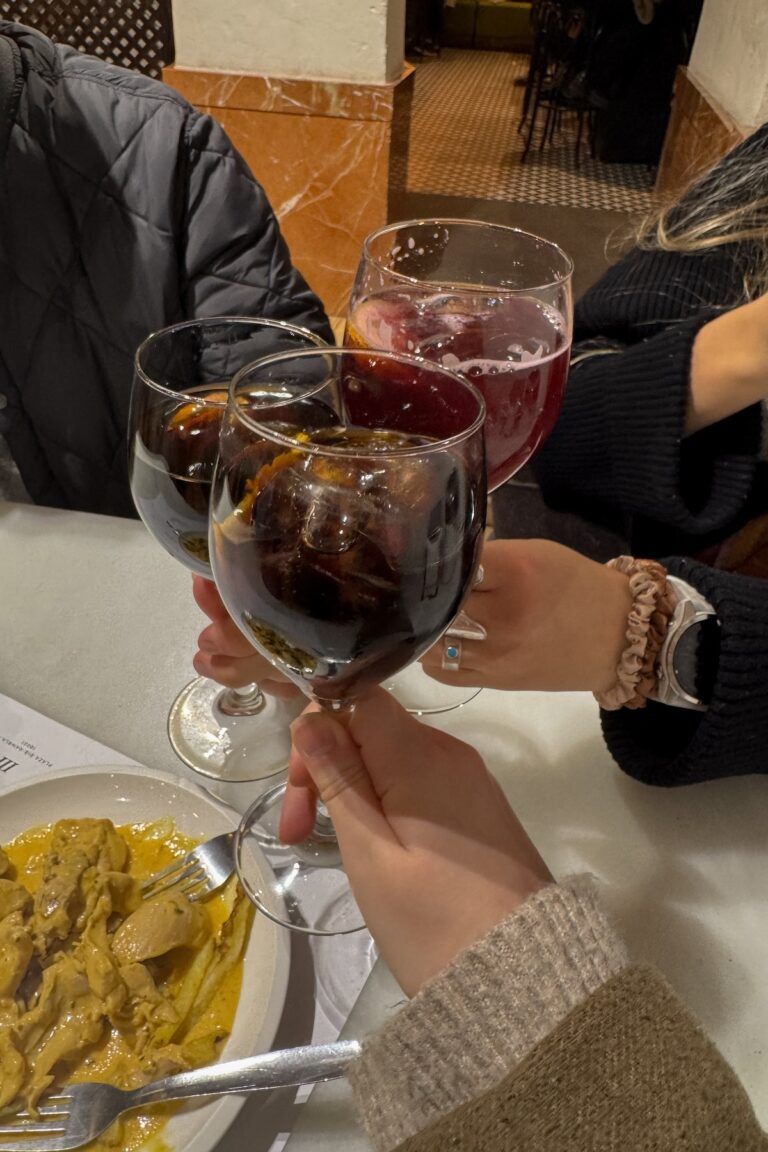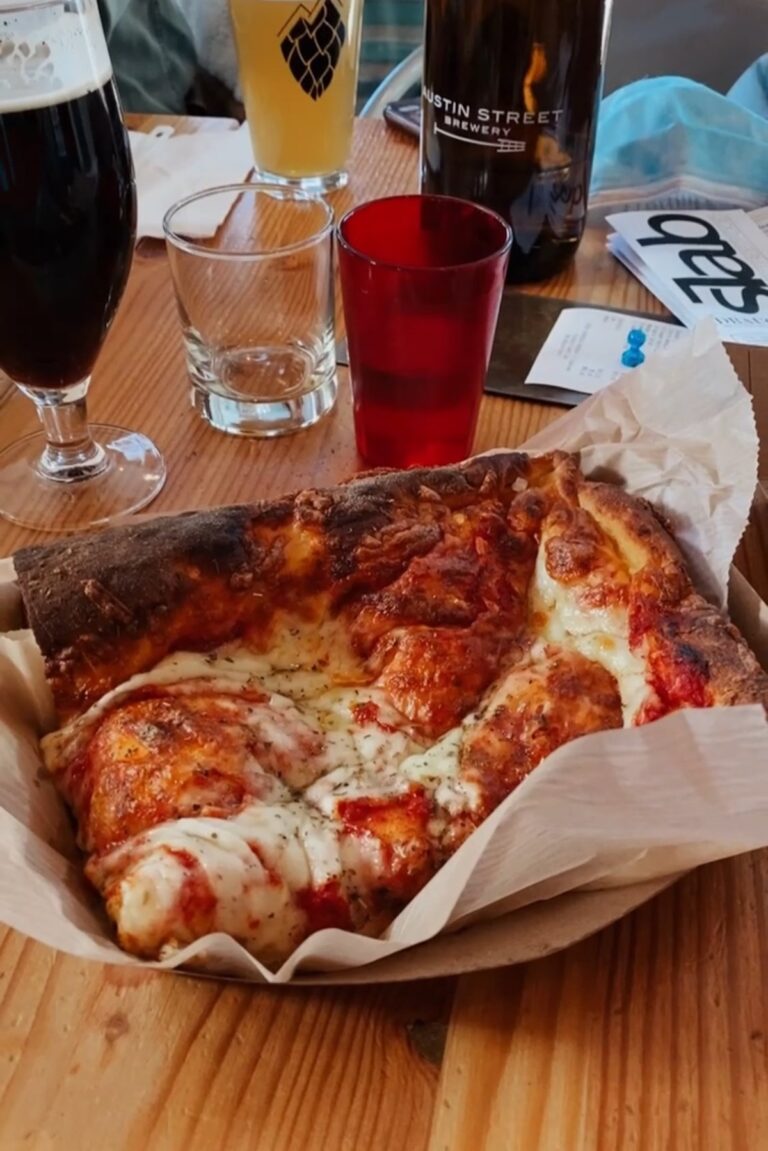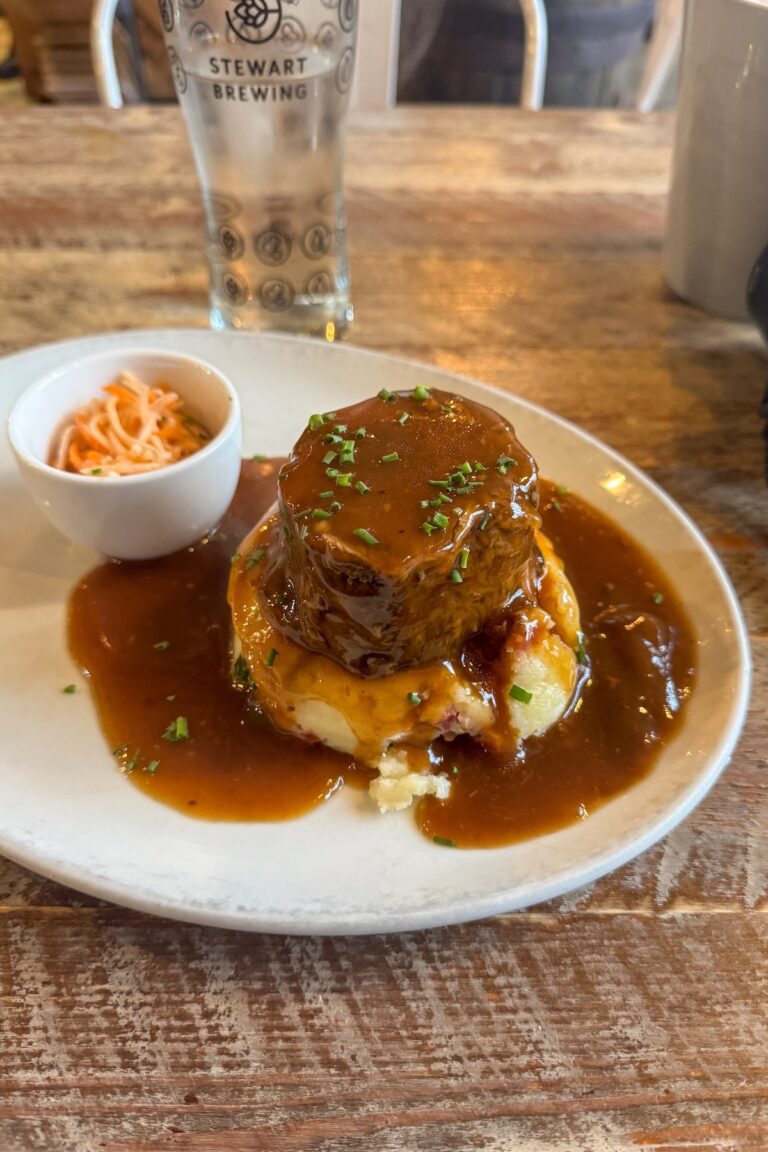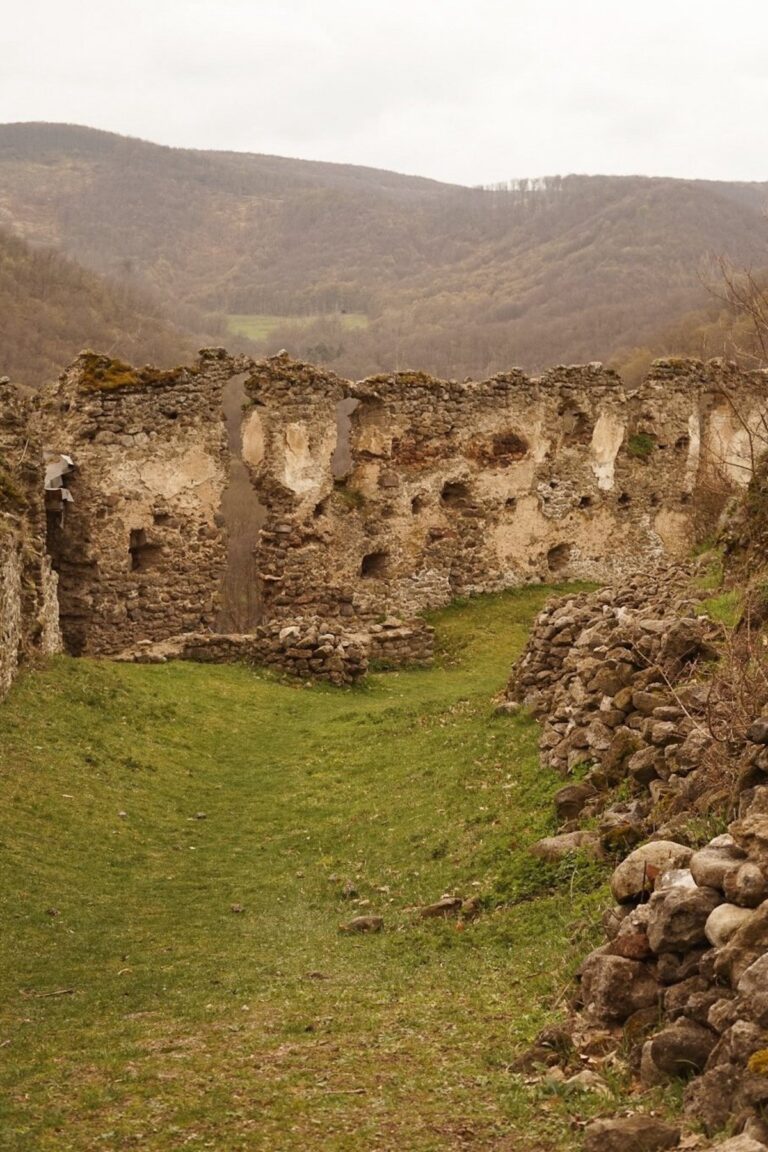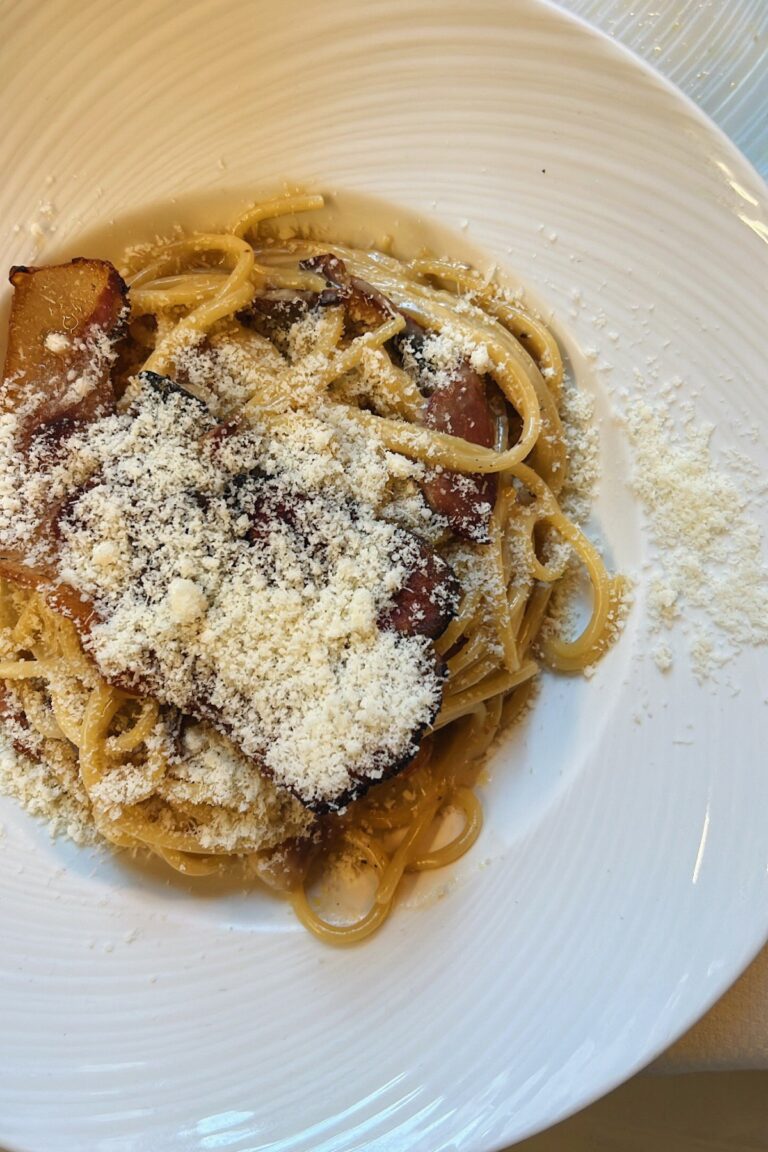Ordering Pasta like a Pro in Italy | Pasta Shapes 101
It didn’t matter that our train was delayed by an hour and we got stuck waiting on the tracks, hot and sweaty, praying the staff at the villa would still let us in after our booking time.
It didn’t matter that we had to push our boat rental to the next day, giving us less time for the excursion than planned, because it was supposed to storm unexpectedly that afternoon.
It didn’t matter that the only stop the ferry wasn’t making that day was the one we needed to get back to our hotel, forcing us to get creative and spend more money than we’d expected on another route home.
None of it mattered when we found a table overlooking the gorgeous blue water of Lake Como, surrounded by tourists and locals and kids and dogs, and the most beautiful plate of pasta I’d ever seen was placed in front of my face. We sat and ate and sipped wine, waiting out the storm that never ended up coming, each bite better than the last.
✰✰✰
Dining in a foreign country can be intimidating when you’re a newcomer in a place that’s totally different than where you’re used to living. The culture is different, the foods are different, and the menus can be confusing, regardless of where you are in the world. Personally, I was super nervous about going out to eat in Italy, because no matter how much research I did to learn about the customs and the social norms and the basic phrases to use, I knew it wasn’t going to be the same as actually sitting down to a dinner table in Florence and ordering my food successfully (and respectfully). But one thing that I was confident in was my knowledge of pasta–would you expect anything less from the ravioli queen herself?
I knew that I’d recognize a good portion of the dishes on the menu regardless of whether they had English copies or not because I’m obsessed with pasta enough to know what most of the different types look like. If you haven’t seen or tried any unique pasta shapes, though, it might be a bit confusing to know what’s what. Plus, if you’re from the US like me, we really only see a handful of basic pasta types at the grocery store or at restaurants. I knew that most menus would be written solely in Italian, and I wanted to avoid the stress of not knowing the language and potentially not having wifi to look up what each item meant in English.
As long as you know the basic types of pasta that are commonly served in Italy, you can be a little more prepared when ordering your meals. Keep reading to get a crash-course so there’s no panicking when you sit down to order your food without Google Translate!
————————
TYPICAL PASTAS IN ITALY
————————
SPAGHETTI
A tried and true pasta shape, spaghetti is probably the most common type of pasta you’ll find in Italy. You can find it prepared in a number of ways, from your classic spaghetti with red sauce, to cacio e pepe, to carbonara, to seafood creations and more. It’s a super versatile pasta that’s great to order if you want to try out new sauces and toppings; you’ll likely find at least one spaghetti dish on every menu in Italy, so if you know you like the pasta itself, you can easily give some new flavors a try depending on how each restaurant prepares it!
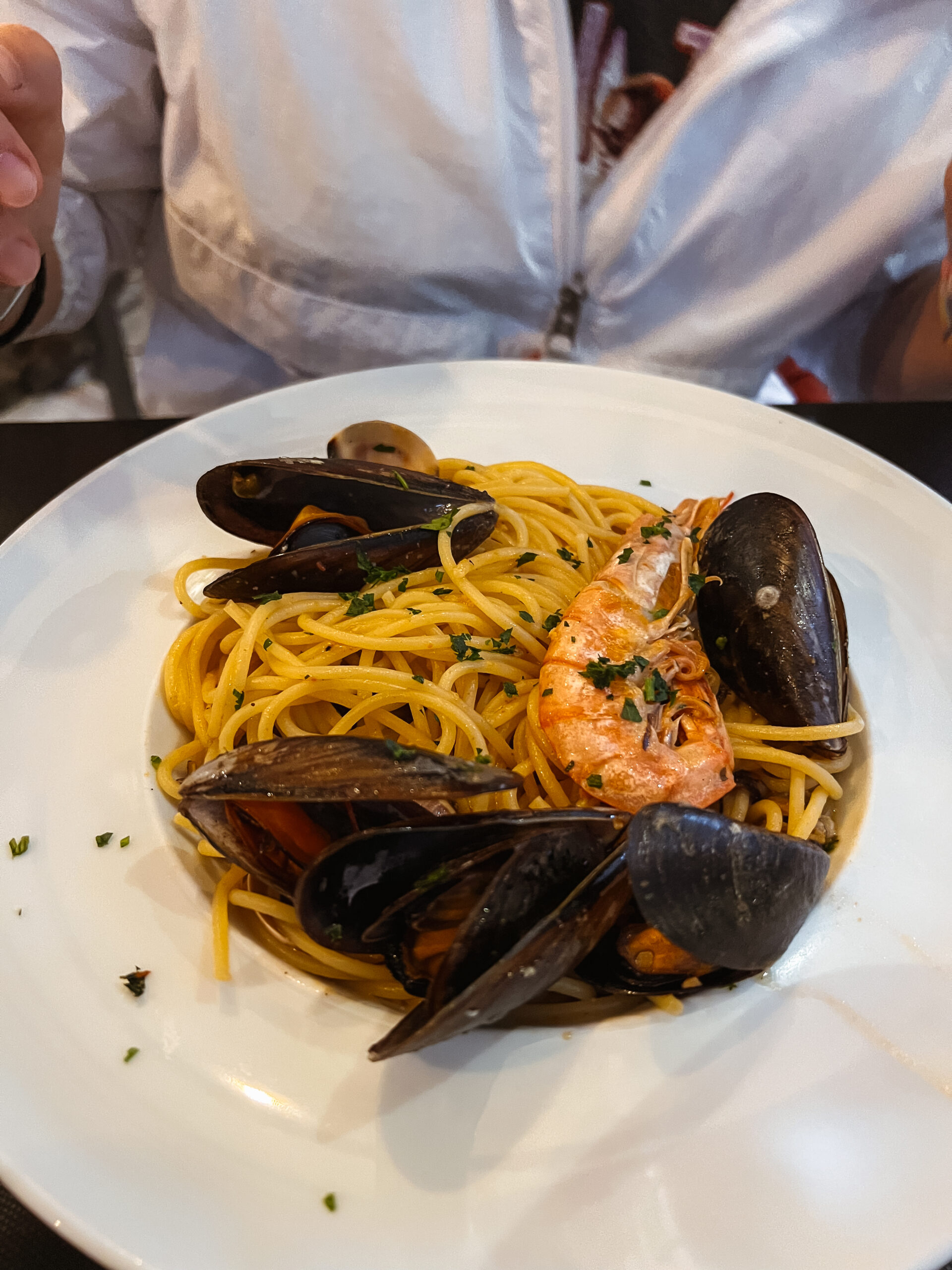
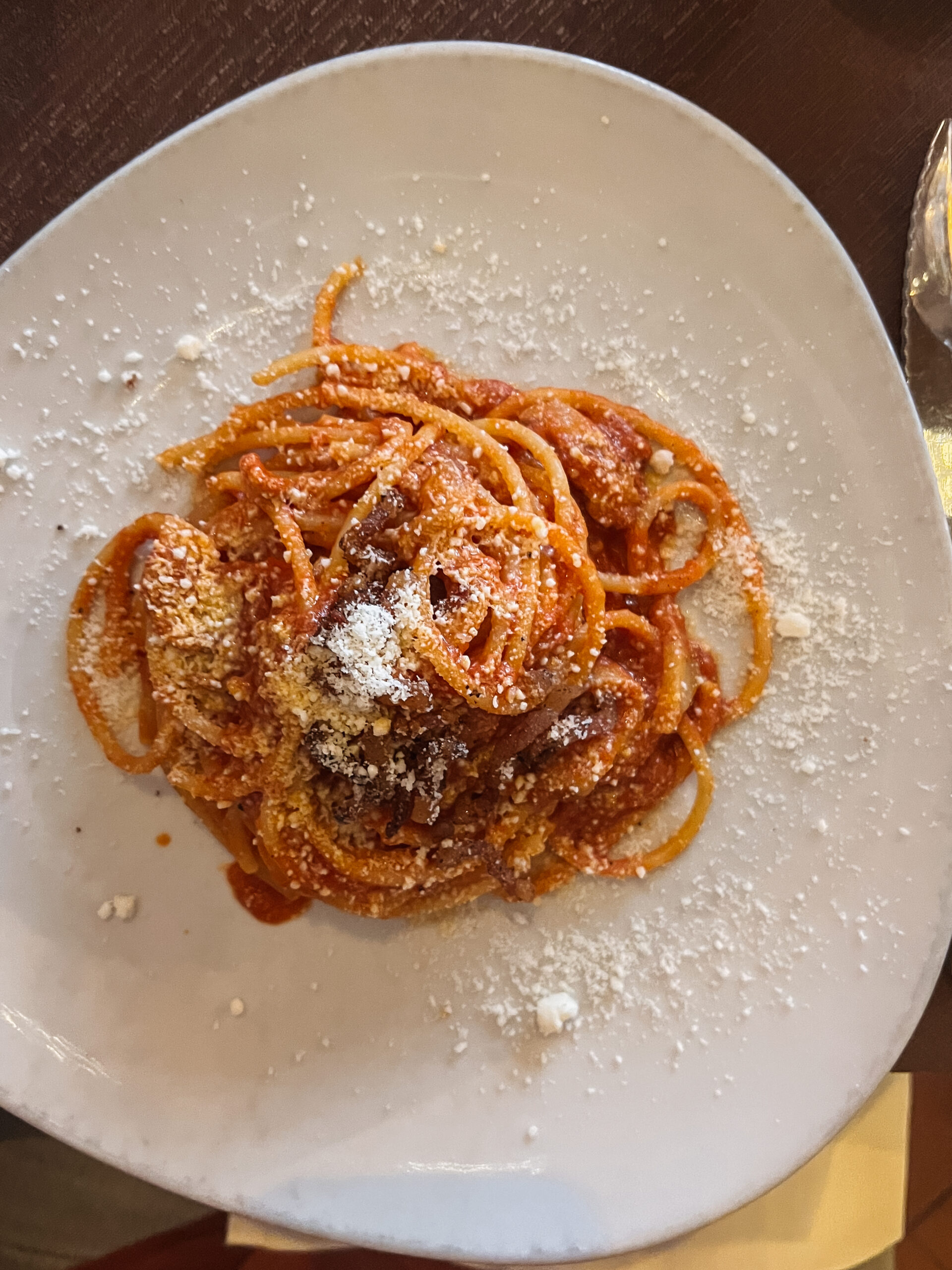
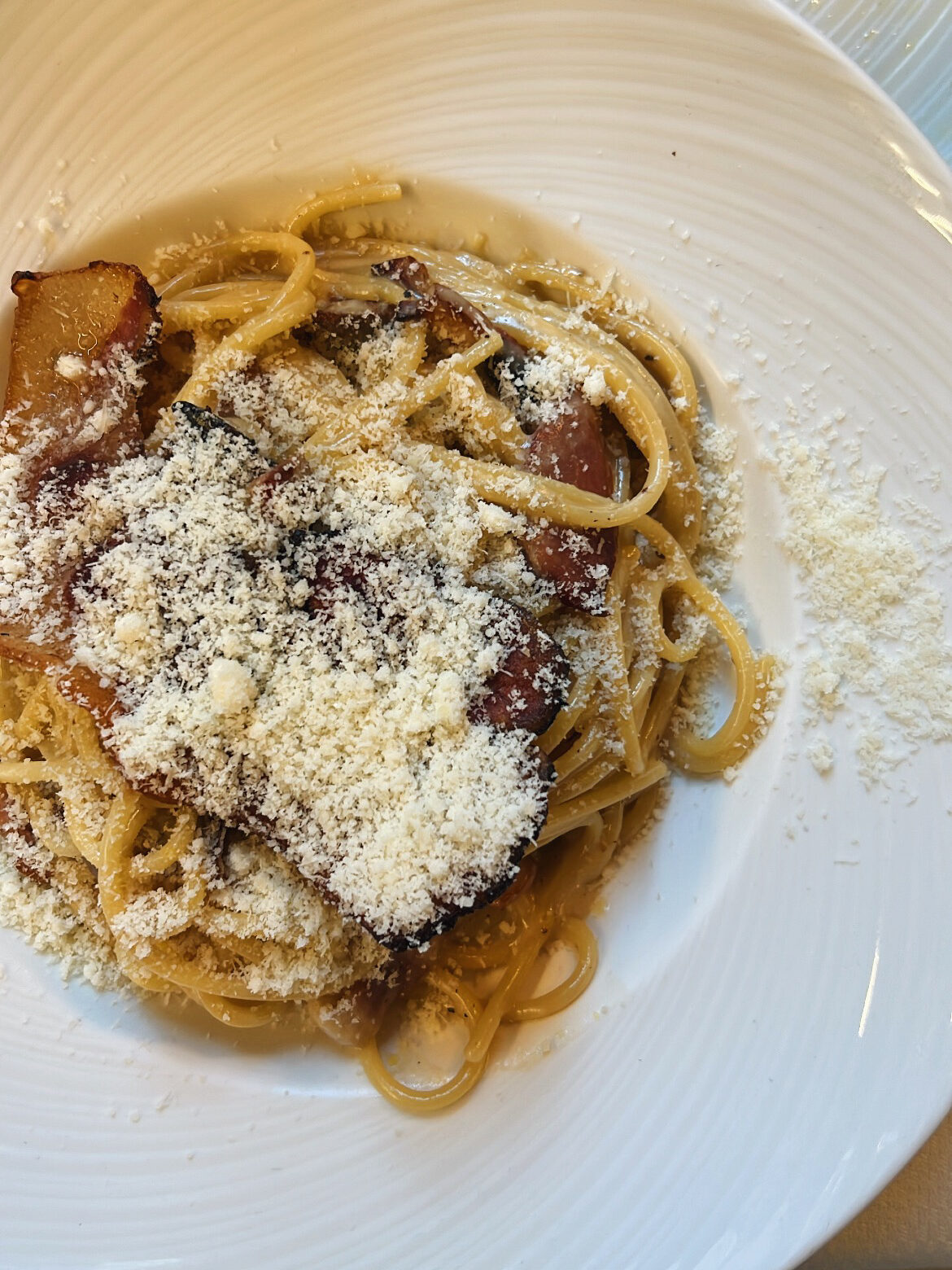
PICI
Pici is like spaghetti’s thicker sibling – it’s essentially the same, just a tiny bit thicker since pici is hand-rolled (which also makes the noodles uneven in thickness, where spaghetti is uniform). This pasta originated in Siena, so you’ll find some amazing pici dishes in the Tuscany region (the ones pictured below are from Siena and Florence, respectively). Pici is made with only water and flour as well, compared to fresh spaghetti which is typically made with flour and egg. Pici is more commonly served with oily, garlic-based sauces, with local meats, or with breadcrumbs rather than heavy, cheese sauces or red sauces (though you can serve it with any sauce you like, of course). I absolutely loved the pici dish I got in Siena that was made with local wild boar–it’s a great pasta to try out local meats you may have never tasted before, especially since there are some amazing traditional pici recipes throughout Italy.
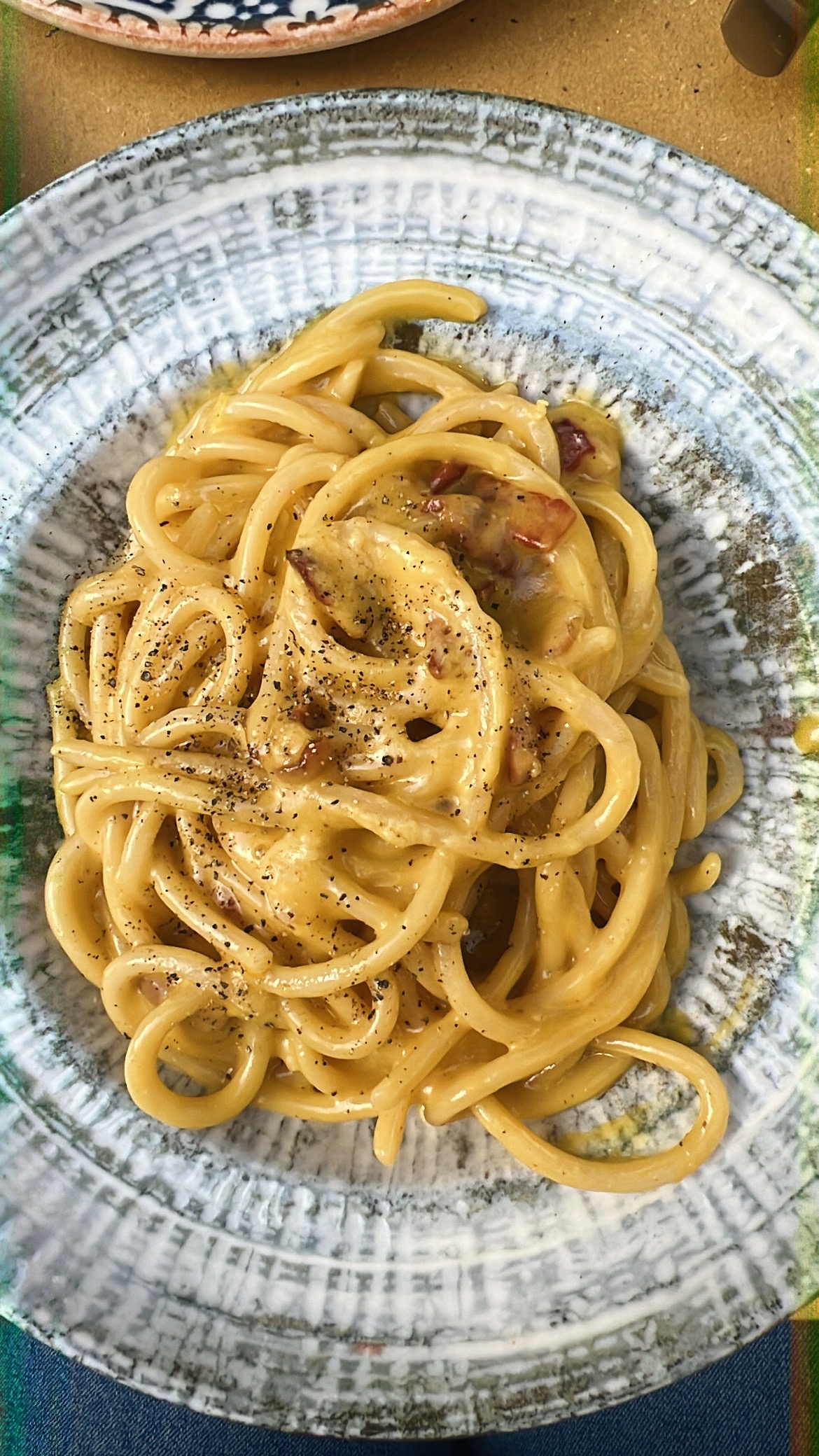
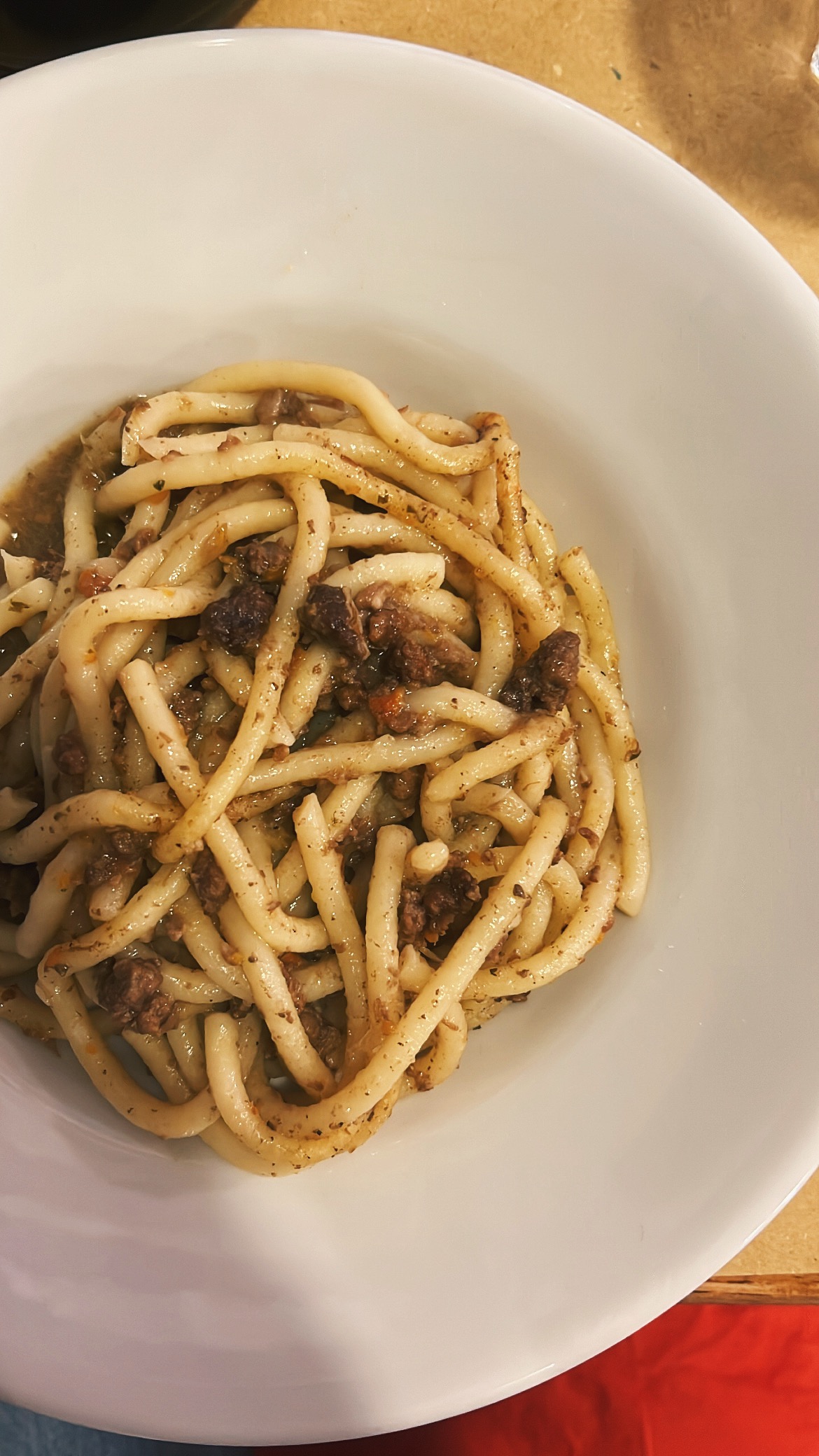
TAGLIATELLE
Also a long noodle, tagliatelle is just like a wider and flatter fettuccini. It originated in the Emilia-Romagna area of northern Italy, and is widely found in Bologna (but can be found through the rest of Italy, too). Tagliatelle dough can be made with or without eggs, and is commonly served with a meat sauce. I’ve also seen (and tasted) a lot of pesto sauces on tagliatelle in Italy as well! Another safe bet when ordering off an Italian menu, with potential for some truly incredible dishes (like the wild boar and burrata tagliatelle pictured below…YUM).
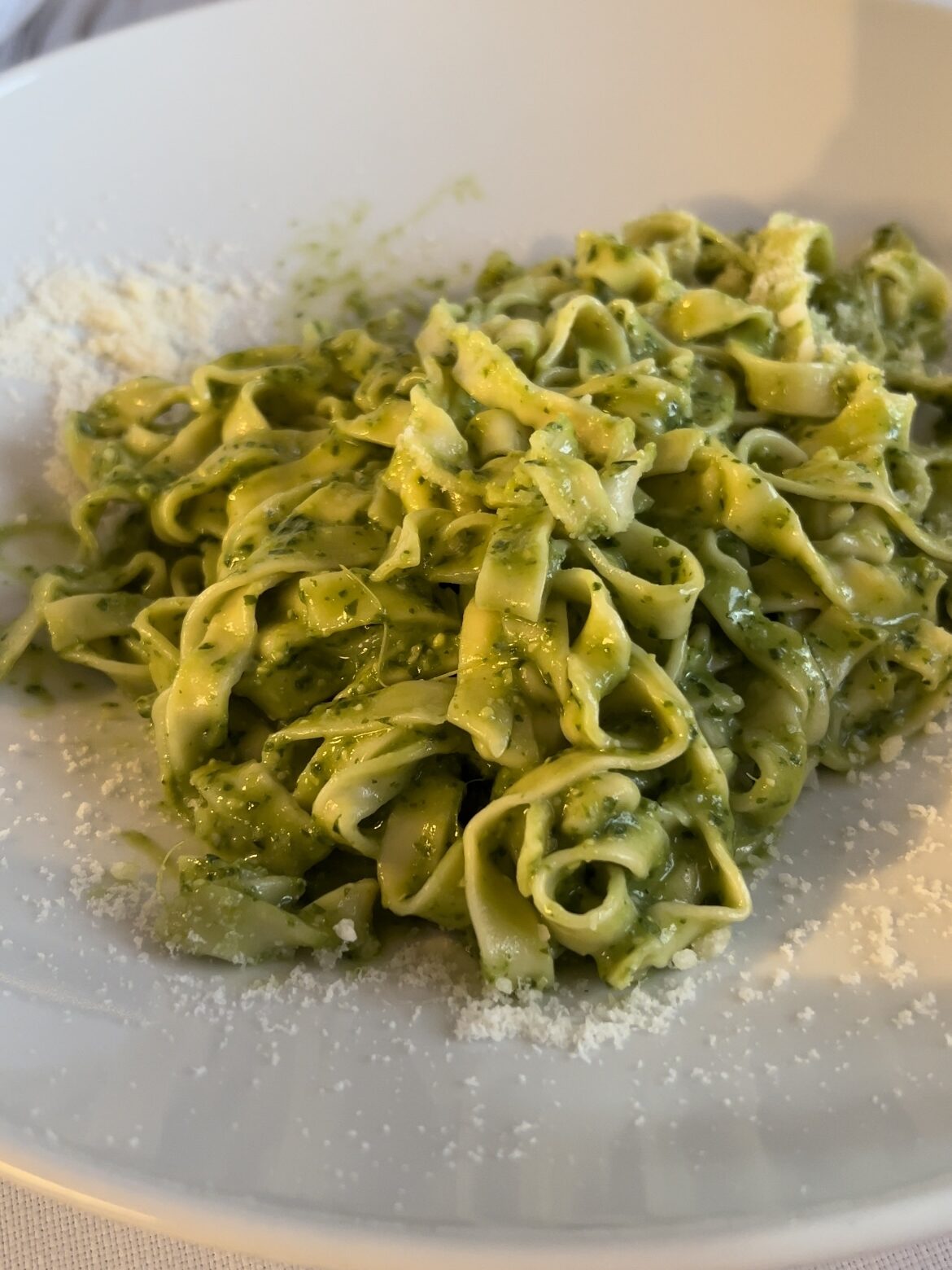
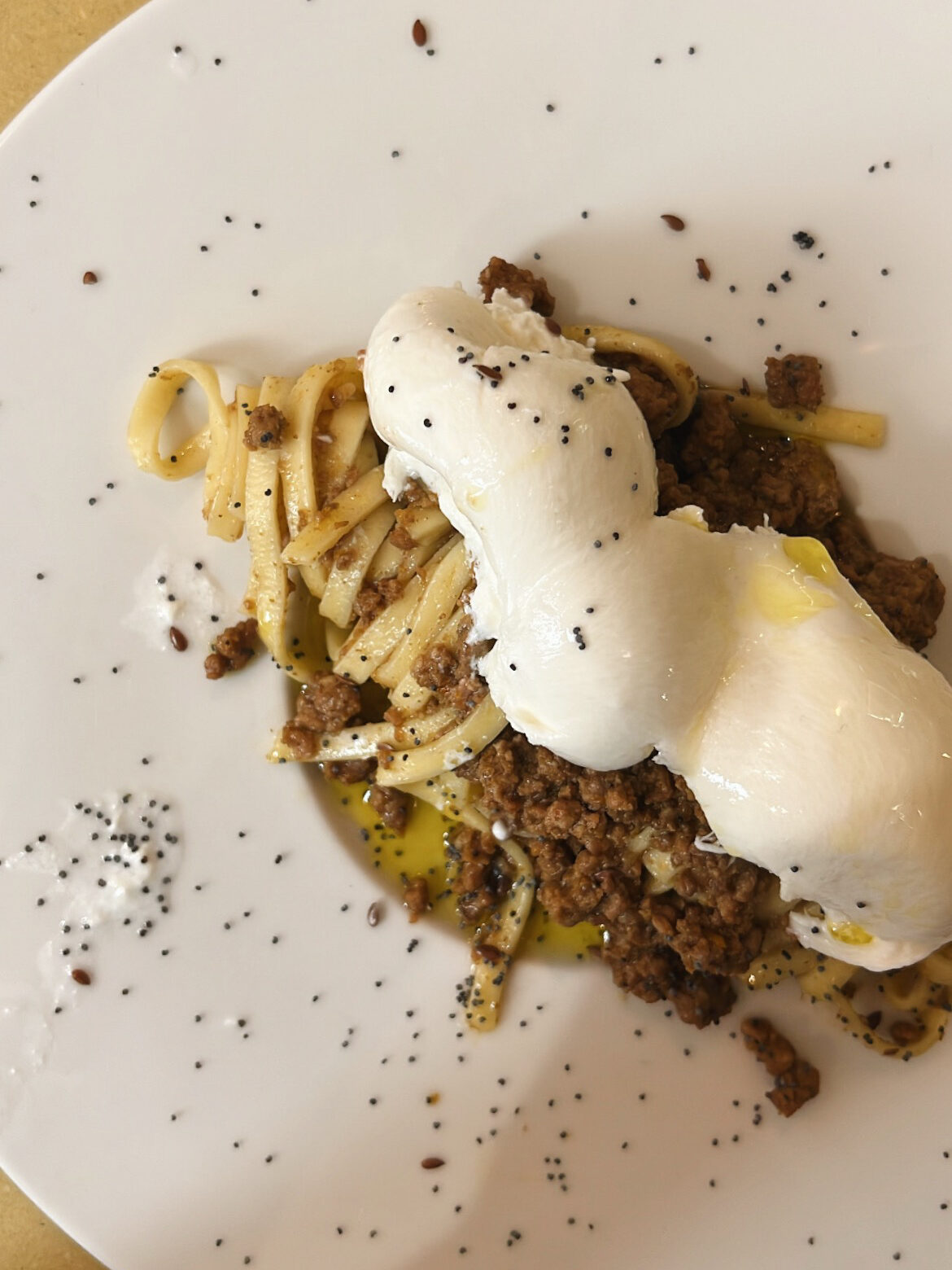
RIGATONI
One of my favorite pasta shapes is an all-time classic: rigatoni. It’s basically a long, hollow tube with ridges on the sides, perfect for getting coated with yummy sauces and toppings (and easy fork access). Weirdly, there are people out there that claim pasta shape doesn’t have any effect on the dish as a whole, but I totally disagree, and rigatoni is the perfect example: the shape allows for more sauce to coat the pasta, plus the thickness and texture carry a much more substantial, rich taste compared to lesser pastas.
Its origins are believed to be in Rome, or generally the south of Italy. You’ll likely find rigatoni al pomodoro on most menus in Italy, as it’s a perfect shape for thicker, chunkier red sauces. I don’t know what about rigatoni makes it so good, but it’s my favorite un-filled pasta shape by far.
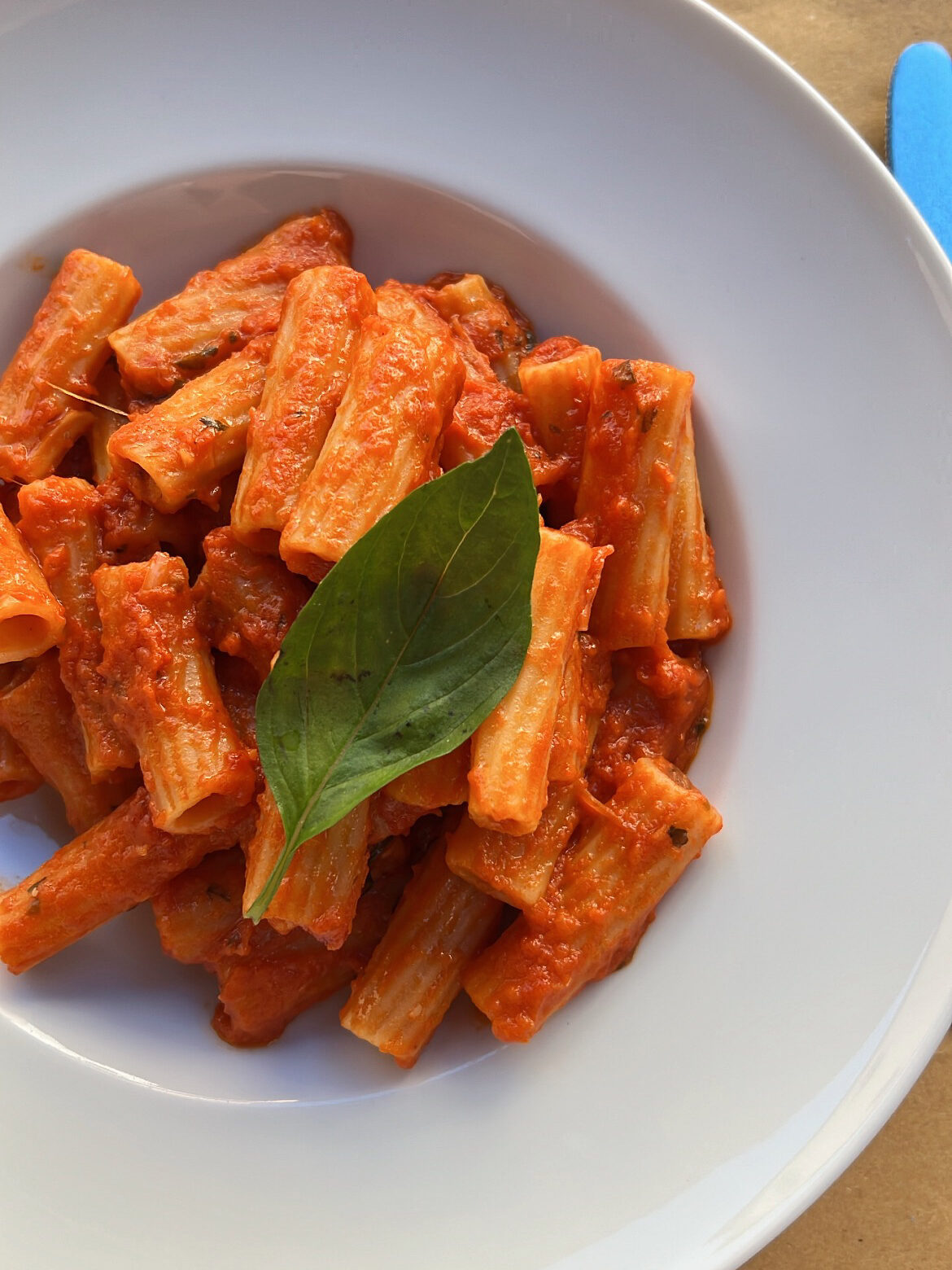
RAVIOLI
Ah, ravioli. My one true love. The word “ravioli” comes from the Italian riavvolgere, which means “to wrap,” which is a very fitting name for this pasta shape. If you aren’t familiar, ravioli is the most common filled pasta, typically made by layering two sheets of pasta dough over dollops of various fillings, and then sealing and cutting the edges to form little pockets of goodness. There are lots of shapes and variations to ravioli, but most often you’ll find them in squares with fluted edges. They also come in little half moons called “mezzalune” which are adorable. Ravioli potentially originated in Sicily, but some also say its origins are in northern Italy–wherever it’s from, I just want to thank that region of Italy for producing the best type of pasta known to man. Ravioli is kind of a catchall for whatever sauce or filling you want, and I’ve seen some really unique dishes throughout Italy, from lamb and sage, to truffle and spinach, to good old ricotta and tomato sauce. Get crazy with it! Try something new–I’m a firm believer that you cannot get a bad plate of pasta in Italy, so be adventurous and get something with truffles on it.
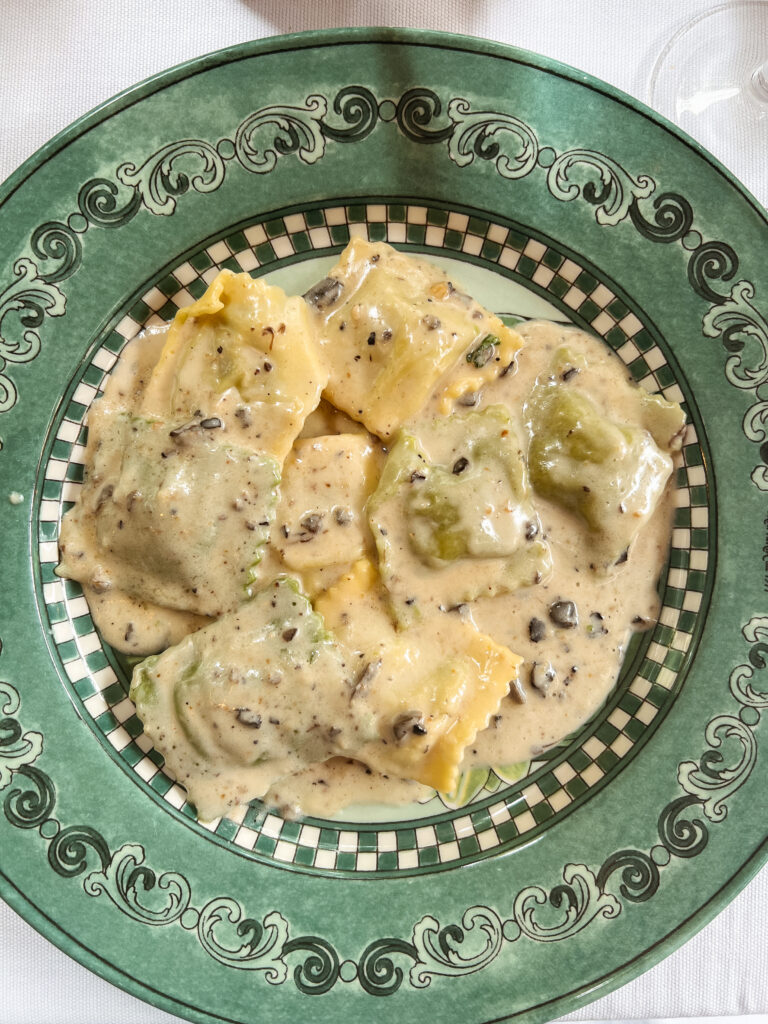
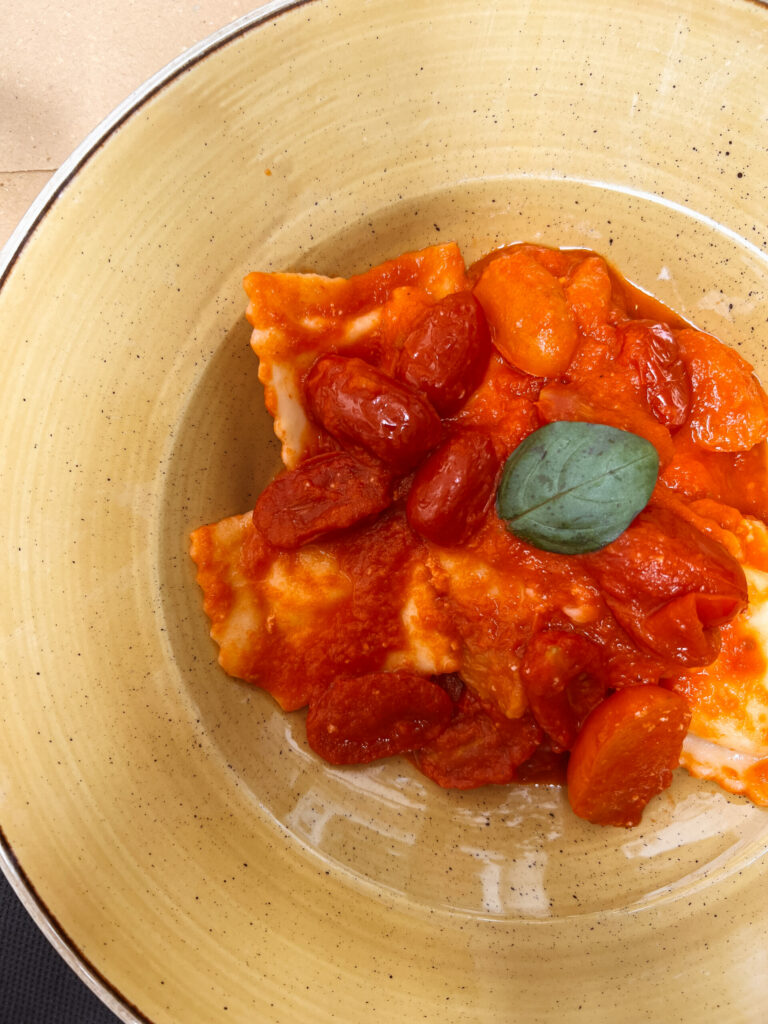
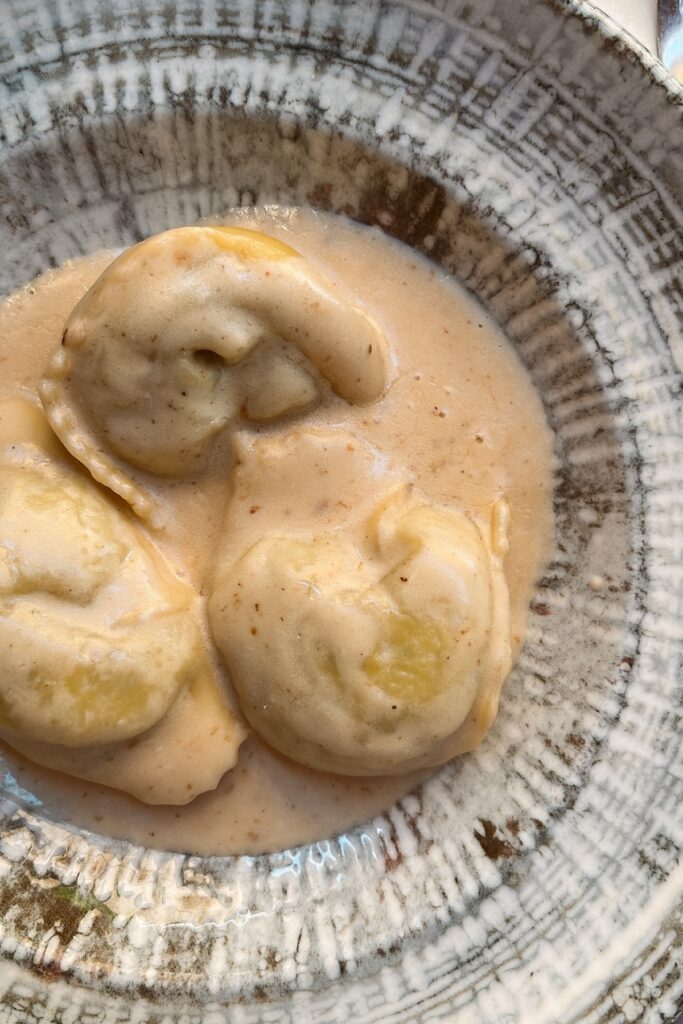
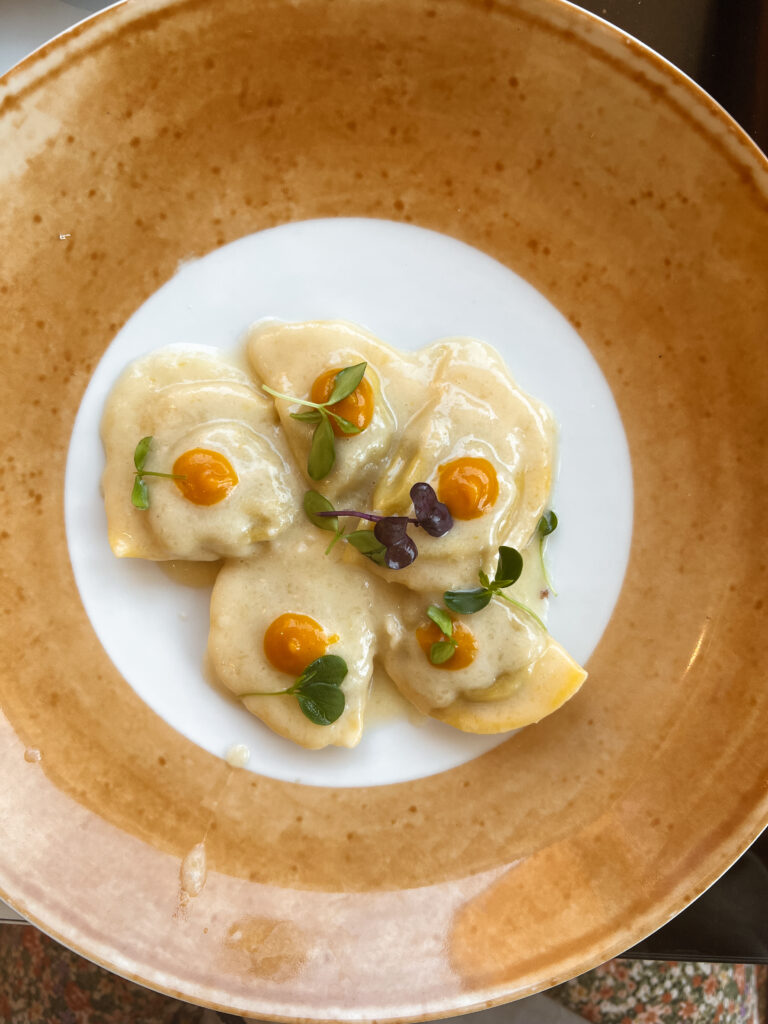
GNOCCHI
The word gnocchi may be derived from the Italian word nocchio, meaning a knot in wood, or from nocca, meaning knuckle. Gnocchi are essentially little rolled balls of potato dough, so they’re technically not considered a pasta, but they’re certainly eaten as such. It originated in northern Italy (clearly a great region for pasta lovers), and every region has its own variation of gnocchi as well. Similar to ravioli, gnocchi are a great pasta to pair with unique sauces and toppings, often used in seafood and meat dishes. You can get gnocchi in a cheesy truffle sauce just as easily as you can find it paired with ground beef or fresh veggies–there’s really no going wrong.
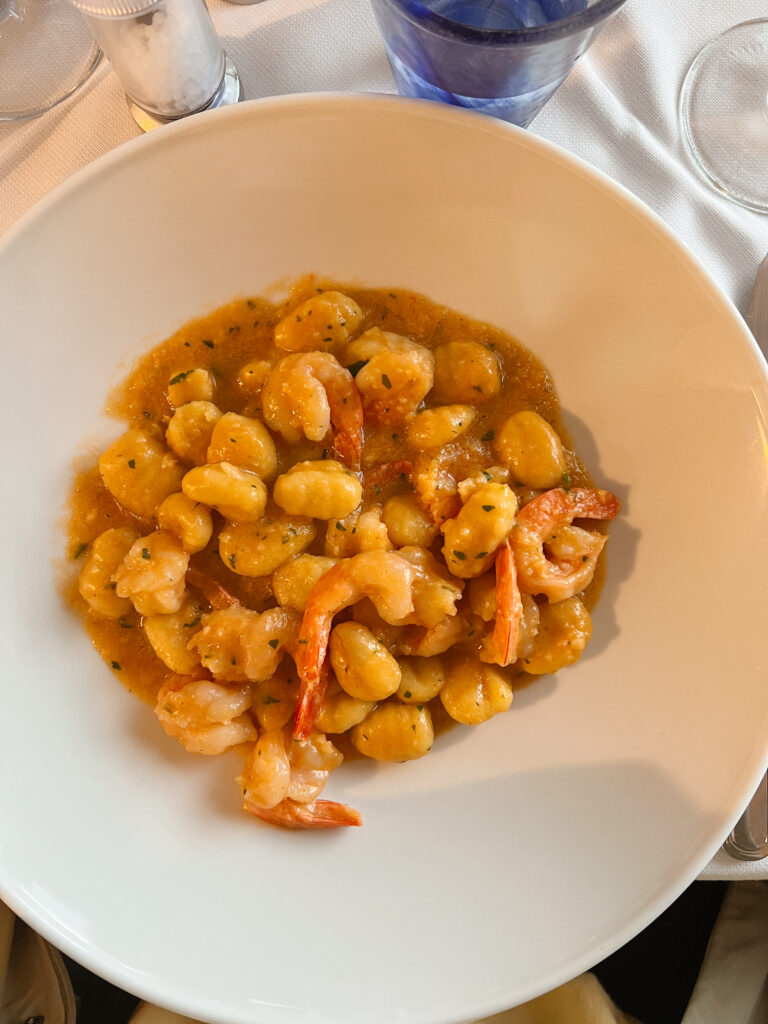
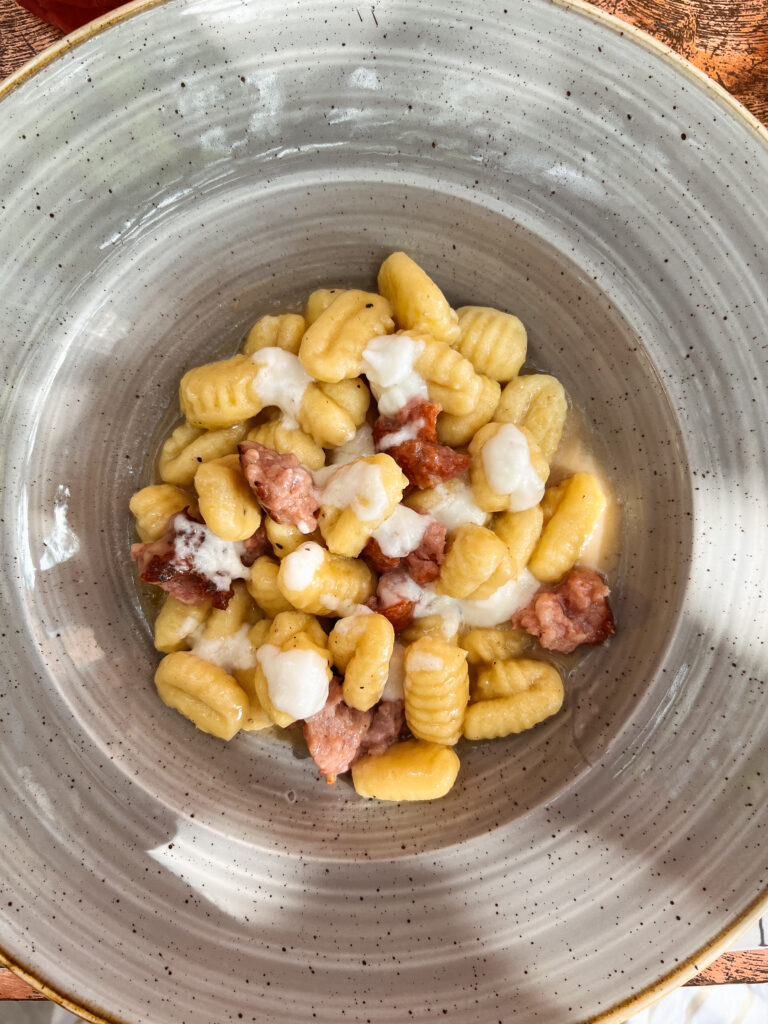
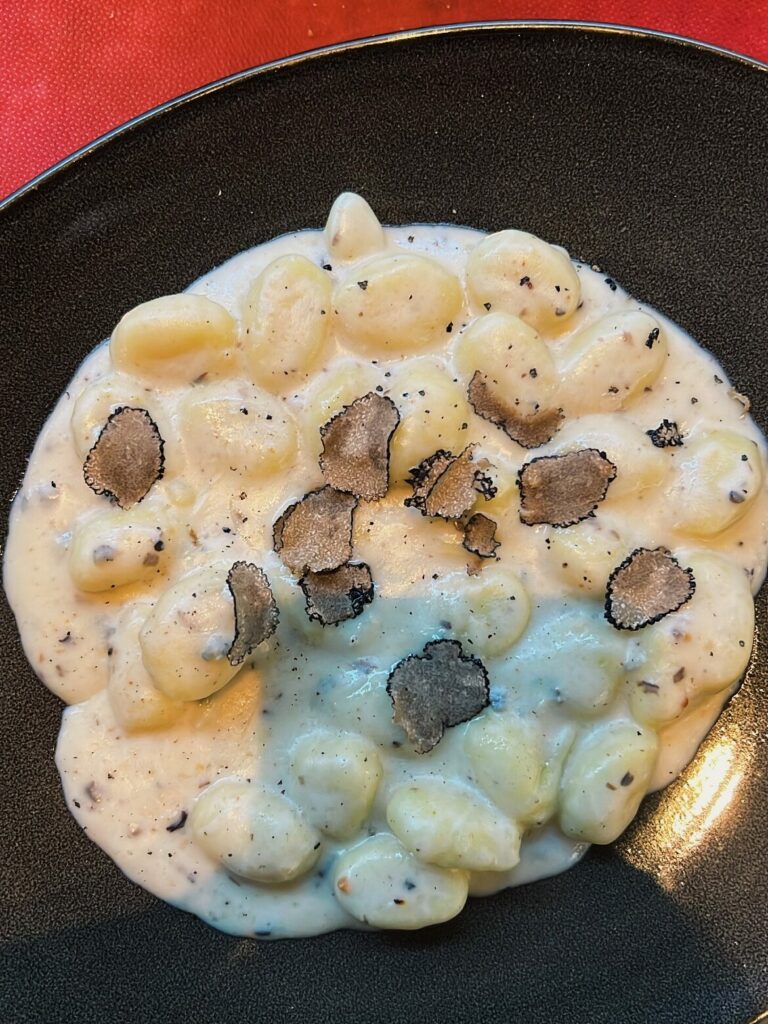
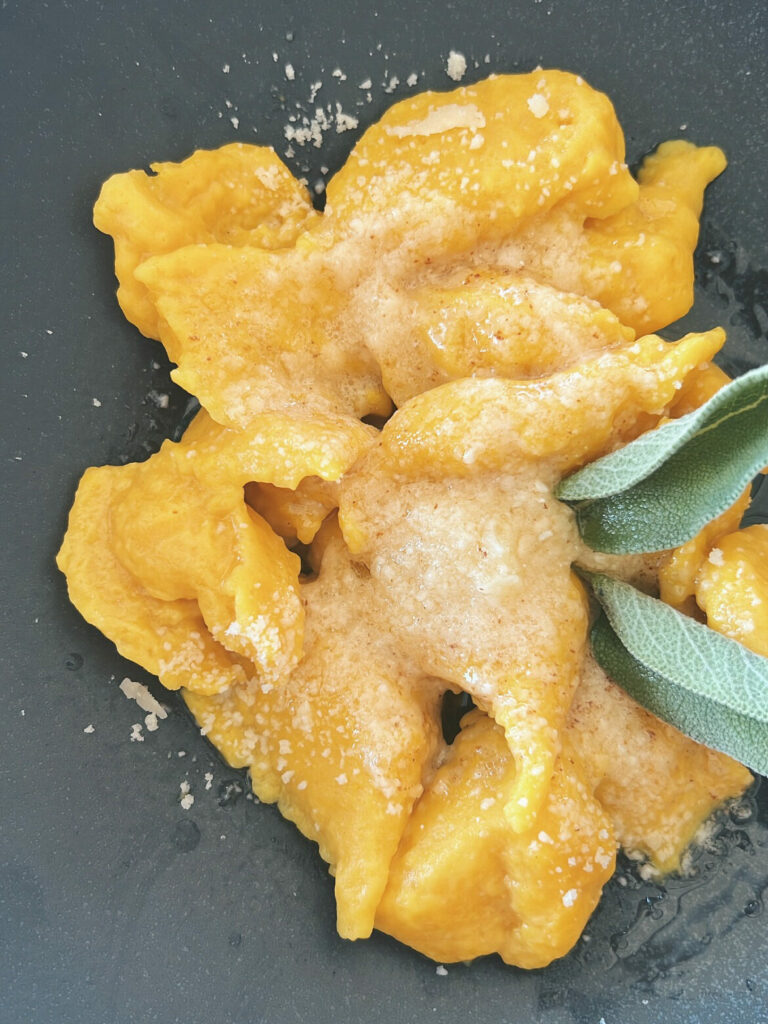
————————
MORE BASICS AND WILDCARDS
Okay, these are the ones that can get a little wonky. They weren’t super popular one menus like the ones above, but I still saw them pretty often and have ordered them all at least once (and they were all fantastic!).
Disclaimer: some of these specific photos were not taken in Italy, but all of these pasta types can easily be found on menus around Italy!
————————
PENNE
I didn’t see penne on very many menus in Italy, and as someone who thinks penne is the absolute most boring pasta shape to ever exist, I didn’t mind one bit. Maybe it was all the half-cooked pasta that my school served for lunch, but I just couldn’t justify traveling all the way to Italy and getting penne (sorry). However, I did see it at restaurants from time to time, and it’s a good pasta if you’re a child or a picky eater, so fear not if you’re a pasta newbie and need a safe bet once in a while.
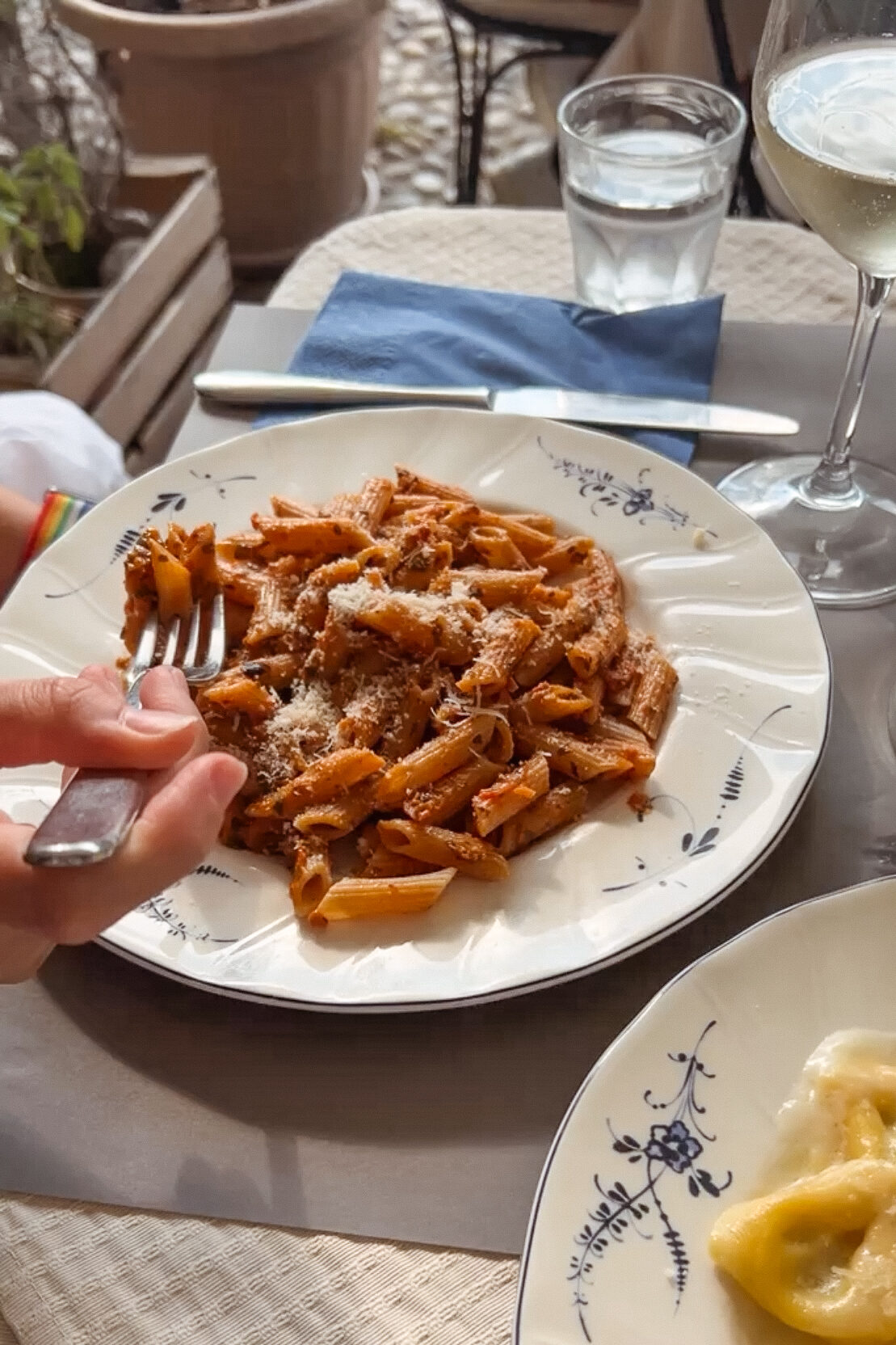
TORTELLINI & TORTELLONI
I probably don’t have to describe tortellini to you, but I will solely based on the fact that they have a near-twin: tortelloni. They look very similar, and are both filled pastas like ravioli, but tortelloni are larger and closed differently than tortellini. Another difference between the two is that tortelloni is typically only filled with cheese, and tortellini will have different fillings of meat, cheese, veggies, and more. A good way to remember the difference (based on size) is that tortellini ends with the suffix -ini, which means “little” (and sounds like “teeny”).
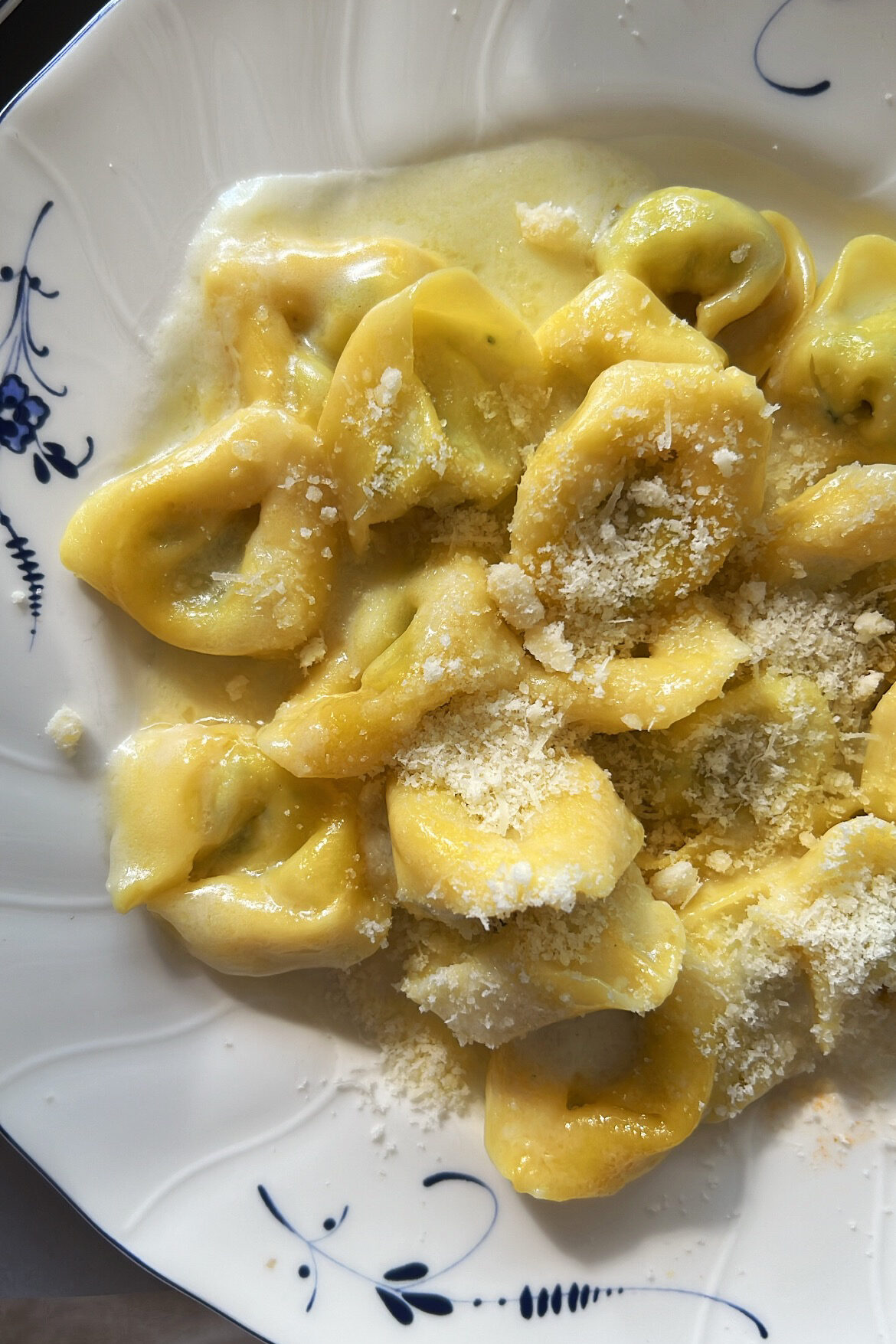
ORECCIETTE
One of my other favorite pasta shapes are these cute “little ears,” or orecchiette. They’re made in a super interesting way, the dough rolled thin, then cut into little pieces and rolled with the edge of a knife to form a little dome. It’s hard to describe without seeing a visual, but they’re the cutest little pasta shape and I love them. Sauces can vary with orecchiette, and I’ve only eaten this particular shape in Scotland with a spicy ‘Nduja sauce (which was incredible). I hear cheesy sauces are big with orecchiette, though.
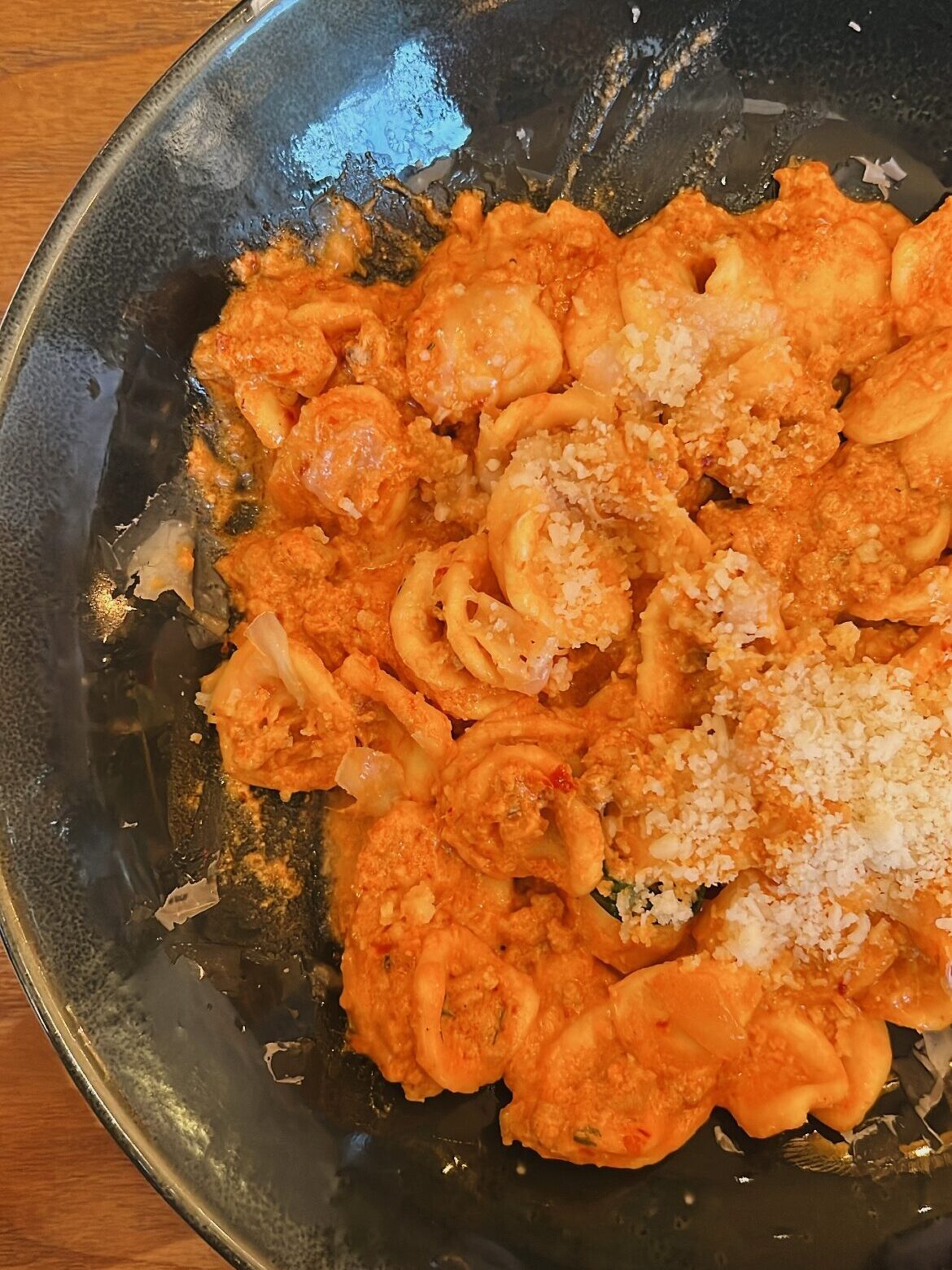
TROFIE
Trofie is a short, twisted pasta from Liguria (northern Italy), which makes it fitting that I enjoyed my first plate in Cinque Terre. I didn’t see trofie anywhere else in Italy, so I either wasn’t looking hard, or this pasta is just super regional to the northern coast. It seems to be most typically served with pesto, and I can attest to its deliciousness.
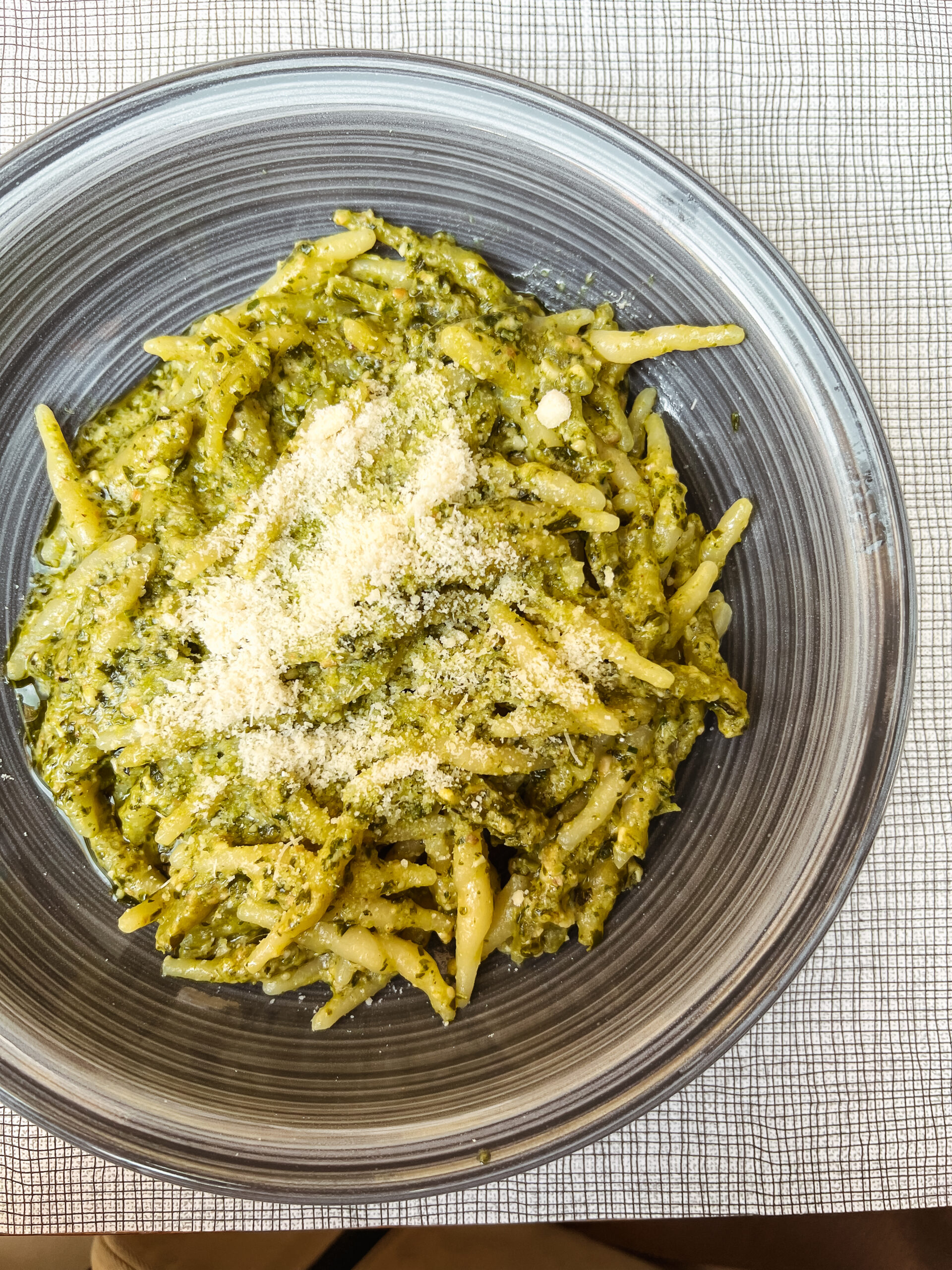
STROZZAPRETI
Very similar to trofie, strozzapreti is a longer, twisted/folded pasta–sort of like very elongated cavatelli. It reigns from the northern Tuscany regions, and the name aptly translates to “priest stranglers” since the little pieces resemble ropes (it also has to do with religion and politics in Italy during the time period this pasta came about). Sauces can vary with strozzapreti as well, and I only saw it on a menu once in Rome–it came in a pistachio and burrata sauce, and it was to die for (too soon?).
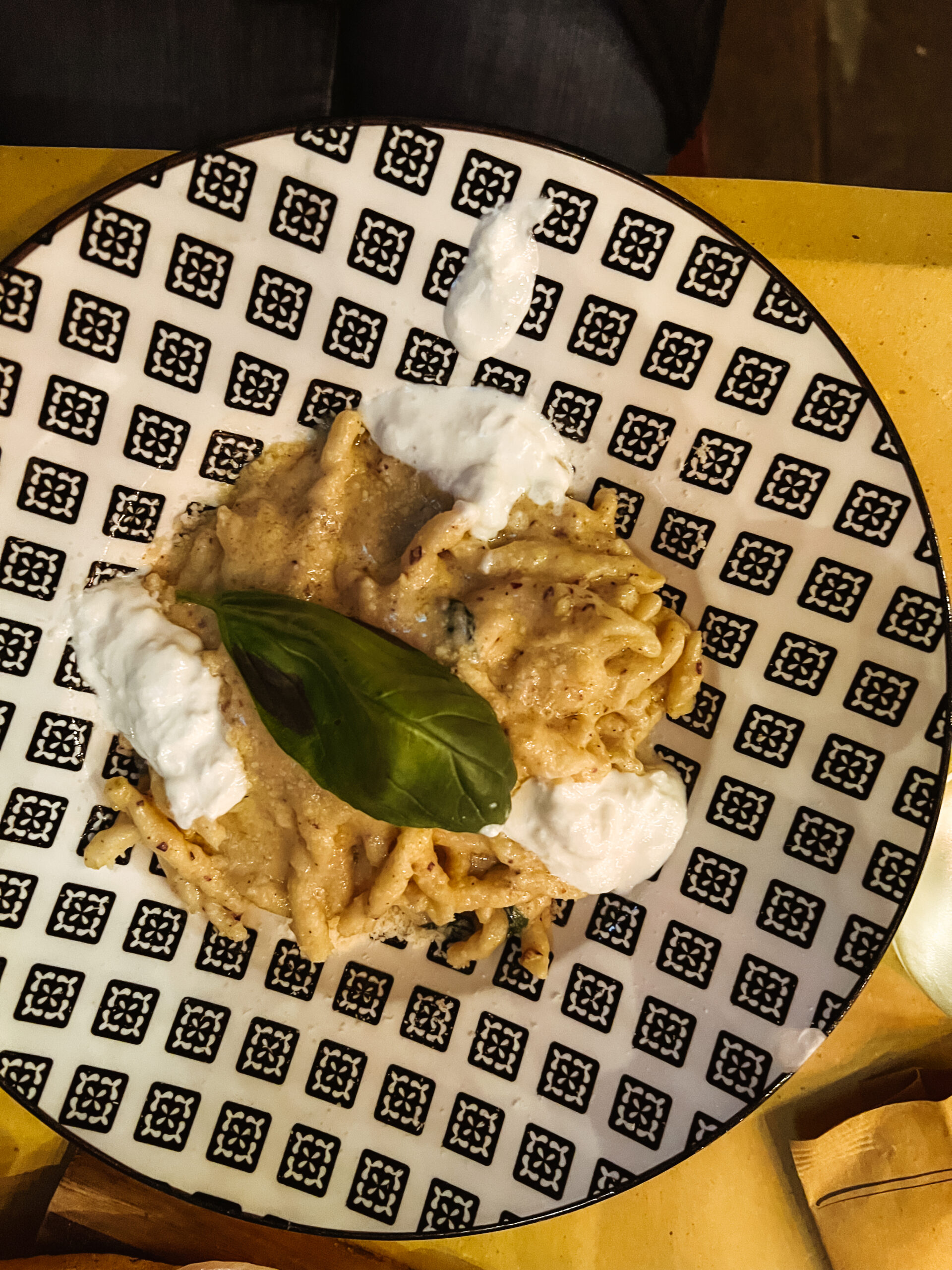
TESTAROLI
Otherwise known as “pancake pasta,” testaroli is shaped into big, flat diamonds or triangles. Probably the most interesting pasta shape I’ve ever seen, and it’s the earliest recorded pasta historically, dating back to the ancient Etruscan civilization period. I also only saw this once in Cinque Terre, and it was super yummy–it’s typically served in a light cheese sauce or with pesto, as this one pictured was. Topped with some Parmesan, and it was the perfect meal on a rainy day in Corniglia.
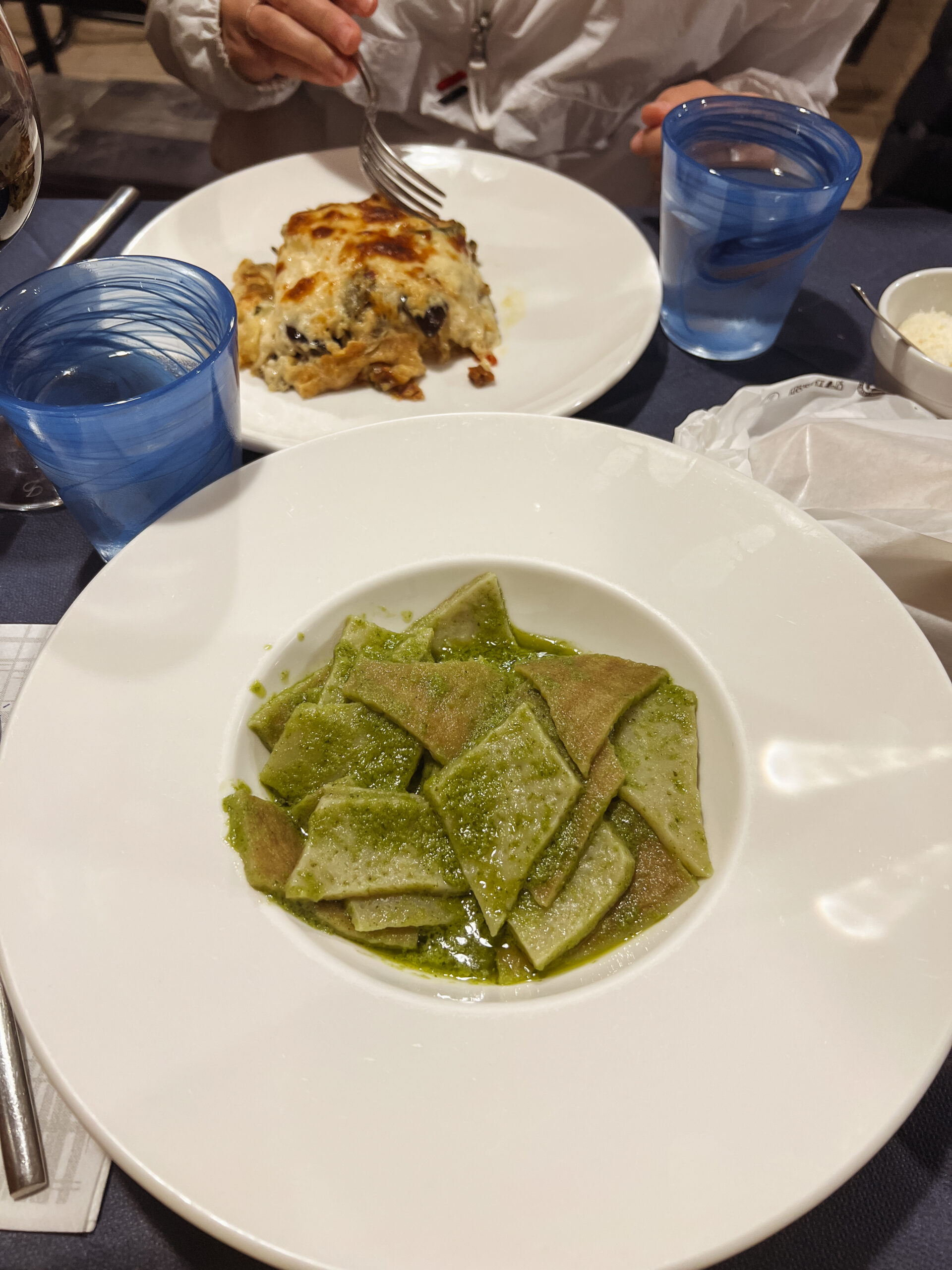
————————
More Italy blog posts:
————————
FOLLOW ALONG
————————

